|
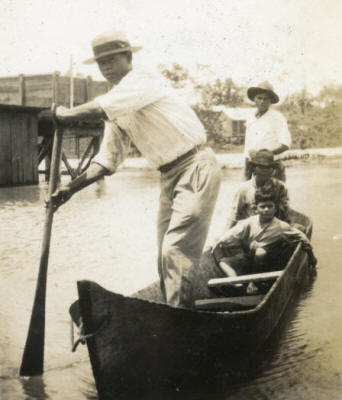 THIS IS THE THIRD PAGE OF
DOCUMENTS FOR THE PERIOD THROUGH 1927
on Nicaragua's Caribbean Coast region, housing
materials dated in the 92 days from April 8 to July 8,
1927.
THIS IS THE THIRD PAGE OF
DOCUMENTS FOR THE PERIOD THROUGH 1927
on Nicaragua's Caribbean Coast region, housing
materials dated in the 92 days from April 8 to July 8,
1927.
From
April 8 the Civil War would rage
for another month, until the May 4
Treaty of Tipitapa. Sandino's
rebellion thence explodes in Las
Segovias, but barely makes a ripple
in the Atlantic Coast. None of
the events described here have much
of anything to do with Sandino.
Especially noteworthy is Dr.
Marchand's 6-page missive of April
24 on the role of Creoles in the
Civil War and the politics of the US
intervention. C. T. Steger's
22-page "Review of Commerce &
Industries for the Year 1926" of May
10 examines the country as a whole,
but also offers much relevant
information on economic activities
in the Coast. Neptune
Mine owner Benjamin Warnick's May 14
letter listing "supplies and money
furnished Liberals as per their
demands" offers insight into how
revolutionary armies in Central
America paid for war, while A. B.
Brand's letter of May 28 describing
some 500 demobilized Liberal
soldiers "committing depredations"
and ravaging local plantations
around San Juan del Norte suggests
some of the ways that social turmoil
continued after the Civil War had
formally ended. Collector of
Customs W. J. Crampton's affadavit
of June 8 shows one reason why US
officials might have had it in for
Bluefields businessman Leon Frank.
US Consul McConnico's July 8 report
("Concrete Results in Trade
Extension Work") details
the growing dominance of US
businesses on the Coast, concluding
that "the Bluefields Consular District is
dependent upon the United States
commercially. ... Americans control
the banana, the mahogany, and the
mining industries ... In fact, the
economic life of the district is
dependent upon Americans."
All
this and more, and a big silence on
Sandino.
|
|
PERIOD MAPS
|
|
1894 mosquito
shore

27 MB,
library of congress
|
1920s
Standard Fruit

6.5 mb,
US National archives
|
1928 Rio wanks
Patrol

3 mb, us
national archives
|
1931 Moravian

2.4 mb,
comenius press
|
|
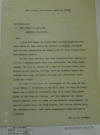
|
8 April 1927.
Letter from US Consul A. J. McConnico,
Bluefields, to US Minister C. Eberhardt,
Managua, p. 1.
"The Honorable The
American Minister, Managua, Nicaragua.
¶ Sir: I have the honor to
report that several protests have been
filled at this office by American
Mahogany companies against the
destruction of their camps by both
Conservative and Liberal forces. ¶
On the 22nd instant, the Otis
Manufacturing Company received a
communication from its contractor, Don
Jose Tomas Oscampo, who was in charge of
a camp on the Rama River near Muelle de
Los Bueyes, stating that the liberal
troops had entered his camp, recruited
his men and absolutely paralyzed his
works. ¶ He also stated that
the operations of the camp on the River
Bulunn, a tributary of the Mico near the
town of Santo Tomas and Acoyapa in
Chonatales, had been completely
paralyzed by the liberal forces.
And the Company had unconfirmed reports
that the camp of Don Ernesto
Largaespada, its largest contractor, had
been burned, the cattle driven away, the
supplies sacked, and Senor Largaespada
himself made a prisoner. ¶
The S.B. Vrooman . . . "
|
|
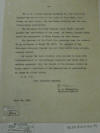
|
8 April 1927.
Letter from US Consul A. J. McConnico,
Bluefields, to US Minister C. Eberhardt,
Managua, p. 2.
" . . . The S.B.
Vroomen Company on March 22, 1927
protested against the destruction of its
camps at Paso Lajas, Rama River, by Diaz
troops, the men being recruited and the
provisions being confiscated. ¶
The Nicaragua Mahogany Company today
filled a protest against the destruction
of its camps on Cusuca, Siquia River,
under the management of Tomas Teja, by
Diaz troops. ¶ The protests
of the first two companies were subject
of my radiogram of March 22, 1927.
The Protest of the Nicaragua Mahogany
Company was not filled until today as
previously stated. ¶ On
Sunday the Jefe Politico will proceed to
Rama with representatives of the
mahogany companies and enter into a
written agreement with the leader of the
Liberal forces to bring about a
cessation of the molestation or
destruction of camps by either party.
¶ I am, Sir, Your Obedienet
Servant, A.J. McConnico, American
Consul."
|
|

|
22 April
1927.
Radiogram from Benjamin C. Warnick,
Neptune Mine, to Admiral Latimer,
Managua.
"ADMIRAL LATIMER,
MANAGUA. REFERENCE GUTIERREZ
BONANZA MINES COMPANY MATTER SUBMTTED TO
YOU BY CAPTAIN WAINWRIGHT GUTIERREZ
CONTINUES MOLESTING PLEASE HAVE HIM
REMOVED IMMEDIATELY ANSWER"
|
|
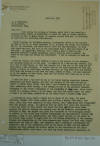
|
1.
24 April
1927.
Letter from Dr. John Louis Marchand,
M.D., Bluefields, to US Consul A. J.
McConnico, Bluefields, p. 1.
A
fascinating account by a highly literate
and interesting figure; all of
Marchand's letters bear close reading.
|
|
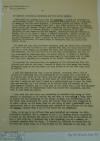
|
2.
24 April
1927.
Letter from Dr. John Louis Marchand,
M.D., Bluefields, to US Consul A. J.
McConnico, Bluefields, p. 2.
|
|
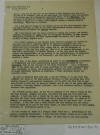
|
3.
24 April
1927.
Letter from Dr. John Louis Marchand,
M.D., Bluefields, to US Consul A. J.
McConnico, Bluefields, p. 3.
|
|
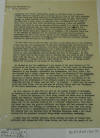
|
4.
24 April
1927.
Letter from Dr. John Louis Marchand,
M.D., Bluefields, to US Consul A. J.
McConnico, Bluefields, p. 4.
|
|
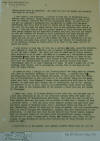
|
5.
24 April
1927.
Letter from Dr. John Louis Marchand,
M.D., Bluefields, to US Consul A. J.
McConnico, Bluefields, p. 5.
|
|
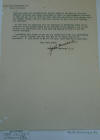
|
6.
24 April
1927.
Letter from Dr. John Louis Marchand,
M.D., Bluefields, to US Consul A. J.
McConnico, Bluefields, p. 6.
|
|
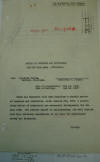
|
1.
10 May 1927.
"Review of Commerce & Industries for the
Year 1926 - Nicaragua," by
C. T. Steger
for the US Consul, Corinto, p. 1.
[NOTE:
This document does
not treat the Atlantic Coast region
exclusively, but provides a very good
capsule summary of the subject for the
country as a whole, including the
Atlantic Coast.] "There was
forwarded with this Consulate’s monthly
review of commerce and industries, dated
January 5th, 1927, a preliminary review
of industrial and commercial
developments for the year 1926.
The present report is supplementary, and
will furnish only data which was
unavailable at the time the preliminary
survey was forwarded."
|
|
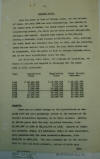
|
2.
10 May 1927.
"Review of Commerce & Industries for the
Year 1926 - Nicaragua," by
C. T. Steger
for the US Consul, Corinto, p. 2.
"FOREIGN
TRADE. From the point of
view of foreign trade, and the balance
of trade, the year 1926 was most
satisfactory. Due chiefly to the
bumper crop of coffee, the chief export
commodity, and the satisfactory prices,
the total export value reached
$15,028,726, setting a new record.
Imports were valued at $10,254,512,
leaving a favorable trade balance of
$2,774,214. Thus, although the total
trade was slightly less than in 1920,
and the favorable trade balance smaller
than in 1924, the year under review may
be considered, from the point of view of
foreign commerce alone, one of the most
satisfactory since the war. ¶
The following table shows, for purposes
of comparison, the values of imports and
exports of Nicaragua for the years 1920
to 1926, inclusive: ¶ [table] ¶
Imports.
¶ There was no marked change in
the importations as compared with the
year proceeding, either in the amounts
of the various commodities imported, or
in their sources. Entries of cotton
goods show the only important decrease,
from $2,669,589 in 1925 to $2,102,998 in
1926. Reports of chemical
products, drugs, and medicines, while of
less importance, show approximately the
same percentile decrease, from $459,980
to $371,599. The only increase was
in the importation of iron and steel
products, values of which rose . . . "
|
|
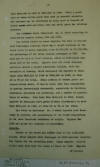
|
3.
10 May 1927.
"Review of Commerce & Industries for the
Year 1926 - Nicaragua," by
C. T. Steger
for the US Consul, Corinto, p. 3.
" . . . from
$682,245 in 1925 to $843,664 in 1926.
While a great part of these latter goods
were used in peaceful pursuits, the
increase may be attributed in large part
to imports of barbed wire and other iron
and steel goods for military purposes.
¶ The attached table (Enclosure
No. 1) shows according to commodities
imports during 1925 and 1926. ¶
The United States as usual supplied the
bulk of imports to Nicaragua; although
there was a slight decrease in the total
value of goods supplied, from $7,272,191
to $7,116,715, the percentage of the
total remains unchanged at 70%.
The same may be said of Great Britain,
which in both years supplied 11% of the
total. Exports from all other
European counties showed a slight
percentile decline, with the exception
of Germany, which increased its exports
to Nicaragua from $607,118 in 1925 to
$725,880 in 1926, or from 6% to 7% of
the total. While entries of German
goods are comparatively small, it may be
noted that this competition is growing
increasingly successful, especially in
textiles, chemicals, glassware and
porcelain, and a number of manufactures
of metals. From less than $100,000
in 1922, German exports to Nicaragua
have grown without fluctuation to more
than $700,000 in 1926, or from 1% to 7%
of the total. ¶ The table of
Enclosure No. 2 shows imports into
Nicaragua by sources, and percentages of
the total originating in the more
important countries of origin.
Figures for 1925 are given for purposes
of comparison. ¶
Exports.
¶ Thanks to the excellent coffee
crop of the 1925-1926 season, total
exports from Nicaragua in 1926 exceed
slightly the figure for the preceding
year. Sugar exports reached little more
than half the value of those in 1925.
Exports . . . "
|
|
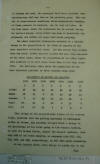
|
4.
10 May 1927.
"Review of Commerce & Industries for the
Year 1926 - Nicaragua," by
C. T. Steger
for the US Consul, Corinto, p. 4.
" . . . of bananas
and wood, the principal East Coast
products, were approximately 40% less
than in the preceding year. This
was due to revolutionary conditions
which hindered the bringing of these
products to seacoast, and the lack of
labor. On the West Coast, where
the Government was in control during the
harvest season, every effort was made to
facilitate the shipments, and coffee and
sugar were moved promptly. ¶
The above described developments
resulted in a decided change in the
proportions to the total of exports of
the more important individual items. For
the second time in more than ten years,
coffee exports account for more than
one-half of the total value, while the
proportion of the other important
products is in most cases lower than it
has been since 1920. The following
table shows the proportion of the more
important products to total exports
since 1920: ¶ [table]
¶ This change in the proportionate
values of the various items, combined
with the growing purchases of Nicaraguan
coffee by France, has likewise brought
about a change in the percentage of the
total going to the various markets.
In 1926 the United States, almost the
largest customer, took only 53% of the
total exports, as compared with 77%,
71%, 72%, 57%, and 65%, respectively, in
the five years proceeding. ¶
As was implied above, this change is
partly due to the . . . "
|
|
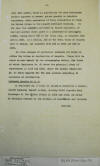
|
5.
10 May 1927.
"Review of Commerce & Industries for the
Year 1926 - Nicaragua," by
C. T. Steger
for the US Consul, Corinto, p. 5.
" . . . fact that
coffee, which is practically the only
Nicaraguan product exported to France,
gained greatly in relative importance,
while production of those commodities of
which the United States is the largest
purchaser declined. At the same
time absolute purchases by France
increased, so that she assumed first
place as a purchaser of Nicaraguan
coffee, taking about 37% of the total
crop, as compared with 30% in 1925.
As a result, 22% of the total value of
exports went to France, and compared
with 16% in 1924 and 14% in 1925.
¶ No other changes of particular
interest are noted in either the volume
or destination of exports. These
will be shown in more detail by the
accompanying tables, the first of which
(Enclosure No. 2) shows the principal
items of exportation in 1925 and 1926,
while the second (Enclosure No. 4) shows
exports for the same periods according
to countries of destination. ¶
Declared Exports
to U.S. ¶ As
Enclosure No. 5 there is likewise
submitted a consolidated declared export
return, showing total exports from
Nicaragua to the United Stated in 1925
and 1926, as shown by consular records
in the files at Bluefields and Corinto.
. . . "
|
|
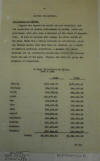
|
6.
10 May 1927.
"Review of Commerce & Industries for the
Year 1926 - Nicaragua," by
C. T. Steger
for the US Consul, Corinto, p. 6.
" . . .
Collections by
Months. ¶ Figures for
imports by months are not available, but
the statistics of customs collections by
months, which are given below, will give
some indication of the trend of
importation. It will be noticed
that during the first months of the
year, there was a steady increase in
collections, lasting through April; from
this time on, however, as a result of
unstable political conditions, a gradual
but steady decrease set in, continuing
practically without fluctuation until
the end of the year. Figures for
1925 are given for purposes of
comparison. ¶ [table] . . .
"
|
|
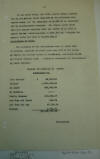
|
7.
10 May 1927.
"Review of Commerce & Industries for the
Year 1926 - Nicaragua," by
C. T. Steger
for the US Consul, Corinto, p. 7.
" . . . Of the
above total, for 1926, important duties
account for $2,179,406.20, while
$142,936.96 was collected from export
taxes, and the remainder of $3,557.76 is
accounted for by miscellaneous receipts.
The figure given above does not include
receipts from the surtax of 12 ˝% on
import duties, which amounted to
$266,302.08, bringing the general total
for 1926 to $3,592,203.00. ¶
Collections by
Ports. ¶ The majority
of the collections were as usual made at
Corinto, receipts at which port were 68%
of the total. El Bluff, the
customs house of Bluefields, collected
18.6%, and Puerto Cabezas 9.1%. A
detailed statement of collections by
ports follows: ¶ [table] . .
. "
|
|
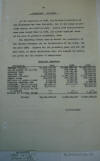
|
8.
10 May 1927.
"Review of Commerce & Industries for the
Year 1926 - Nicaragua," by
C. T. Steger
for the US Consul, Corinto, p. 8.
" . . .
GOVERNMENT
FINANCES. ¶ At the
beginning of 1926, the financial
situation of the Government was very
favorable, due to the large collections
during the previous year. During
1926 total revenues were even larger
than in 1925, and almost equaled those
of the year of greatest production,
1920. ¶ The following tables
show in detail the production of the
various revenues and the distribution of
the total, the year 1926. Figures
for the preceding year, and for the year
1920, in which collections were the
largest on record, are given for the
purpose of comparison. ¶
[table] . . . "
|
|
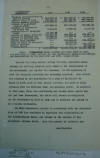
|
9.
10 May 1927.
"Review of Commerce & Industries for the
Year 1926 - Nicaragua," by
C. T. Steger
for the US Consul, Corinto, p. 9.
" . . .
[table] ¶ Despite the large
returns during the year, excessive
expenditures for military purposes have
added to the indebtedness of the
Government, and emptied the Treasury.
At the beginning of 1927 the financial
situation was extremely critical.
Some relief was attained by the
negotiation of a loan of $1,000,000 in
March of 1927, most of this amount,
however, was used to repay advances from
the National Bank, and pressing debts.
In addition to this loan, there are
outstanding war claims whose amount has
not yet been determined, but which will
become an obligation on the government
as soon as they can be examined and
passed on by a claims commission.
¶ The High Commission created in
conformity with the Financial Plan of
1927 has continued to supervise the
distribution of the extraordinary funds,
and attend to the service of the
Guaranteed Customs Bonds. Thus the
payment of interest and . . . "
|
|

|
10.
10 May 1927.
"Review of Commerce & Industries for the
Year 1926 - Nicaragua," by
C. T. Steger
for the US Consul, Corinto, p. 10.
" . . .
amortization of the public debt has not
been interfered with. One drawing
was held in July, 1926, to retire bonds
to the value of $110,000, and at a
second drawing in January, 1927, further
retirements in the amount of $125,000
were made, bringing the total
retirements from1926 revenue to
$225,000. The total amount
outstanding as of February 1st, 1927, is
$2,632,000. . . . "
|
|

|
11.
10 May 1927.
"Review of Commerce & Industries for the
Year 1926 - Nicaragua," by
C. T. Steger
for the US Consul, Corinto, p. 11.
" . . . The
developments of interest took place
during the year with respect to banking
or finances. The average
circulation of the Cordoba increased
again as compared with the preceding
year, the monthly average rising from
3,467,000 in 1925 to 4,253,000 in 1926.
¶ Interest rates showed little
fluctuation, ranging from 8 to 12%,
according to the nature of the security
and of the loan itself. New York
exchange remained unchanged at 99.5
buying and 101 selling, throughout the
years . . . ."
|
|
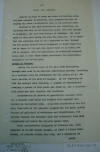
|
12.
10 May 1927.
"Review of Commerce & Industries for the
Year 1926 - Nicaragua," by
C. T. Steger
for the US Consul, Corinto, p. 12.
" . . .
ROADS AND
STREETS. ¶ Despite
shortages of money and other
deficiencies arising from internal
disturbances, more progress was made in
highway and street constructions than in
any previous year. ¶
Although no more road construction was
undertaken, resurfacing was done on two
important roads: that from Managua to
Matagalpa, and that from Managua to
Jinotepe. The total spent on this
work during the year was $120,000.
It is hoped that the surfacing done is
of a character to last through the wet
season without being destroyed; in which
event work can be begun in the next dry
season where it is being left off at
present, with the expectation of
sufficient programs being made to make
these roads practicable for automobiles
throughout the entire year. ¶
Paving in
Managua. ¶ During the
latter half of the year 1925 preliminary
surveys were made by an American
engineering concern, resulting in a
contract with the Government for the
paving of all the inner sections of the
city of Managua. By the beginning
of 1926 the surveys were finished, a
program of construction covering a
period of four years was drawn up, and a
construction plant had been acquired and
installed. ¶ Construction of
streets of penetration macadam (that is,
a macadam base bound and covered with
asphalt) was carried on throughout 1926.
Completed construction was not more than
half of the proposed program for the
year; partly because of political
disturbances and interferences, but
chiefly because the advances from the
Government were made irregularly and
below the amounts agreed upon. ¶
Total construction completed to February
1st, 1927 amounted to 11,629 square
meters, or about 2 lineal kilometers, of
streets within the city, and 1 kilometer
of . . . :
|
|
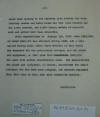
|
13.
10 May 1927.
"Review of Commerce & Industries for the
Year 1926 - Nicaragua," by
C. T. Steger
for the US Consul, Corinto, p. 13.
" . . . paved road
leading to the cemetery just outside the
city. Sanitary sewers and water mains
had been laid beneath all the paved
streets, and 4,900 lineal meters of
concrete curb and gutter have been
completed. ¶ Total
expenditures to January 1st, 1927, were
$416,180, of which $200,000 was advanced
during 1925, and a like amount during
1926. About three-fourths of this
total was expended for the preliminary
surveys, and for plant and equipment, so
that less than $100,000 has gone into
actual construction work. The
expenditures for plant and equipment, of
course, constitute the chief overhead
for the four year programs, and amounts
expended from this time on will show
more immediate results. . . . "
|
|
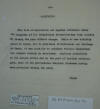
|
14.
10 May 1927.
"Review of Commerce & Industries for the
Year 1926 - Nicaragua," by
C. T. Steger
for the US Consul, Corinto, p. 14.
" . . .
SANITATION
¶ The work of sanitation and
hygiene initiated under the auspices of
the Rockefeller Foundation has been
carried on during the year without
change. While no new activity
could be begun, due to political
disturbances and shortage of funds, it
was possible to continue without
diminution the program already in
existence. anitary conditions in
the larger cities and in the port of
Corinto continue good, none of the
preventable tropical diseases having
been prevalent during the year. . . . "
|
|
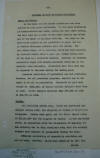
|
15.
10 May 1927.
"Review of Commerce & Industries for the
Year 1926 - Nicaragua," by
C. T. Steger
for the US Consul, Corinto, p. 15.
" . . .
PROGRESS IN MORE
IMPORTANT INDUSTRIES. ¶
Mines and Mining.
¶ In the mines of both coasts
operations have been carried on with
great efficiency. To the usual
difficulty of transportation was added,
during the year under review, the fact
that two or more of the mines usually
lay within one of the zones of military
activity. The mines of the East
coast carried on the production of gold,
and two in Western Nicaragua produced
gold and silver. The
San
Albino Mines, at La
Libertad**, which had been acquired by
American owners about a year ago, worked
during much of the year in a primitive
fashion. However, in December
production began with modern machinery
which had in the meantime been
installed. Production from this
mine may be expected to increase during
the coming year. ¶ Accurate
statistics of production are not
available; however, for all practical
purposes, exports may be assumed to be
all of production. Shipments of
gold were valued at $685,565, or almost
exactly $100,000 more than in 1925.
Silver exports declined from $78,431 in
1925 to $35,782 in 1926. ¶
Coffee.
¶ The 1925-1926 coffee crop, which
was harvested and shipped during 1926,
was slightly in excess of 18,000,000
kilograms. Prices were good, and
the total export values of $8,100,397
was the largest on record. As was
mentioned above, in connection with the
discussion of exports, it was entirely
due to the excellent crop that the
country enjoyed some measure of
prosperity during the year. ¶
Official statistics of exports by
countries are not at hand. However,
statistics compiled by this Consulate .
. . " [**
Note: the report is inaccurate here; San
Albino Mines were not near La Libertad,
Chontales, but El Jícaro & Murra in
Nueva Segovia Dept. See the first
pages of the
TOP 100.]
|
|
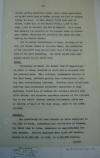
|
16.
10 May 1927.
"Review of Commerce & Industries for the
Year 1926 - Nicaragua," by
C. T. Steger
for the US Consul, Corinto, p. 16.
" . . . giving
quantities alone, show a total
exportation of 19,609 short tons of
coffee through the Port of Corinto
during the year. Of this amount,
9,100 tons went to France, 5,413 went to
the United States, 1,627 to Germany,
1,509 to Holland, and 600 to England.
Thus France has regained her position as
the largest taker of Nicaraguan coffee,
which for the preceding two years had
been held by the United States. ¶
Due to uneven distribution of rains,
shortage of labor, and damage caused to
volcanic fumes, the production of the
1926-1927 crop was not more than 60% as
great as that of the year preceding.
The total export crop will hardly exceed
10,000 short tons. ¶
Woods.
¶ Production of woods, the second
item of exportation in point of value,
declined by about 50% as compared with
the previous year. This industry,
represented chiefly on the East Coast,
suffered greatly from interruption
arising from revolutionary activity.
Shifting zones of military activity made
continuous production impossible in many
sections; recruiting of workmen for
military services made labor scarce; and
disputes regarding payment of the
forestal tax to the Puerto Cabezas
Liberal Government, which was in control
of most of the East Coast, added to the
difficulties. ¶
Bananas.
¶ For practically the same reasons
as those mentioned in the case of woods,
production and exportation of bananas,
the third item in value, decreased in
approximately the same measure.
Exports declined from 3,087,147 bunches,
valued at $1,736,055, in 1926, to
2,162,745 bunches, . . . "
|
|
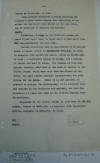
|
17.
10 May 1927.
"Review of Commerce & Industries for the
Year 1926 - Nicaragua," by
C. T. Steger
for the US Consul, Corinto, p. 17.
" . . . valued at
$1,225,661, in 1926. ¶
Revolutionary conditions likewise
prevented the Bragman’s Bluff Lumber
Company from exploiting to any extent
its new 10,000 acre tract on the Wawa
River, due to inability to complete its
railway. ¶
Sugar.
¶ Production of sugar in the
1925-1926 season was about 17,500 short
tons, of which about 11,500 short tons
were exported during the year 1926.
¶ Customs statistics show an
exportation of 10,155,619 kilos of
sugar, valued at $876,228, in 1926, as
compared with 10,980,910 kilos, valued
at $1,5559,165 in 1925 – a negligible
change in volume, but a decline of
almost one half in value. The
records of this Consulate, however, show
that in the case of exports to the
United States, which were more than
two-thirds of the total, the unit prices
remained approximately the same during
the two years. While it is not
possible at present to explain the
discrepancy, it is believed that the
figures of the Consulate are correct,
and that the statement of value for 1925
in the customs figures must be
erroneous. ¶ Shipments to
the United States in 1926 were
16,030,500 pounds, valued at $499,160,
as compared with 20,203,500 pounds,
declared at $632,767, in 1925."
|
|
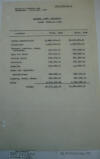
|
18.
10 May 1927.
"Review of Commerce & Industries for the
Year 1926 - Nicaragua," by
C. T. Steger
for the US Consul, Corinto, p. 18.
[TABLE:
IMPORTS INTO NICARAGUA, YEARS 1925 &
1926. Major items in
sequence: Cotton manufactures.
Foodstuffs. Chemical products,
drugs, medicines. Iron and Steel.
Leather goods. Petroleum.
Gasoline. Fibre and vegetable
manufactures. Liquors, beers,
wines. Other.
TOTALS:
$10,376.291.00 ($10.4 million) in 1925,
and only $22,000 less in 1926, at $10.3
million.] [In
brief: at stake were ten million bucks
worth of imports by mostly US companies.
That's not huge in comparative terms,
but it's not peanuts. And that's
just imports.]
|
|
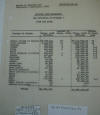
|
19.
10 May 1927.
"Review of Commerce & Industries for the
Year 1926 - Nicaragua," by
C. T. Steger
for the US Consul, Corinto, p. 19.
"ENCLOSURE
NO. 2 ¶
IMPORTS INTO
NICARAGUA ¶ . . . "
[Table: Columns: Country of
origin. Value, 1925 Dollars.
Percent of total, 1925. Percent of
total, 1926. ¶ United States of
America:-- $7.272.121.00 --- 70 Percent
of Total in 1925 and 1926]
|
|
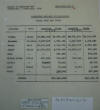
|
20.
10 May 1927.
"Review of Commerce & Industries for the
Year 1926 - Nicaragua," by
C. T. Steger
for the US Consul, Corinto, p. 20.
"ENCLOSURE NO. 3
¶ PRINCIPAL
EXPORTS OF NICARAGUA, Years 1925
and 1926." [Table: Columns:
Articles. Unit. Quantity &
Value 1925. Quantity & Value 1926.
Top three exports in both years:
Coffee: $5.6 million in
1925, and $8.1 million in 1926.
Bananas: $1.7 million
in 1925, and $1.2 million in 1926.
Woods: $1.9 million in
1925, and $1.3 million in 1926.]
[In other words, considerable
capital & profit were at stake here — a
tiny fraction of Latin American trade as
a whole in these years, but a lot of
money all the same.]
|
|
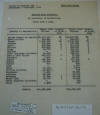
|
21.
10 May 1927.
"Review of Commerce & Industries for the
Year 1926 - Nicaragua," by
C. T. Steger
for the US Consul, Corinto, p. 21.
"ENCLOSURE NO. 4.
¶ EXPORTS
FROM NICARAGUA by countries of
destination, Years 1925 & 1926. . . ."
[USA: $7.9 million & 65%
in 1925, and $6.9 million and 53% in
1926. In a year, France gained 8%,
Colombia shot up close to 3,000 percent.
Lots of abrupt swings.]
|
|
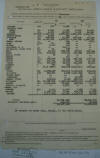
|
22.
10 May 1927.
"Review of Commerce & Industries for the
Year 1926 - Nicaragua," by
C. T. Steger
for the US Consul, Corinto, p. 22.
"Consular Form 20:
ANNUAL
DECLARED-EXPORT RETURN . . . from
Nicaragua to the United States of
America during the year ended December
31, 1926 . . . "
|
|
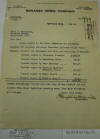
|
14 May 1927.
Letter from Benjamin C. Warnick, Neptune
Mine, to US Consul A. J. McConnico,
Bluefields, p. 1.
"Dear Sir: ¶
Please submit to the Mixed Comission [sic]
the following vouchers for supplies and
money furnished Liberals as per their
demands, vouchers are originals herewith
enclosed, being as follows: ¶
Voucher singed by Francisco Gonzales
$154.88 ¶ Voucher signed by
Sebastian Perez 54.50 ¶
Voucher signed by Luis Arroliga 500.00
¶ Voucher signed by Fernando
Gutierrez Humberto Molina 266.60 ¶
Voucher signed by Ramon Gradis 500.00
¶ Voucher signed by Rodolfo Dorn B
48.60 ¶ [total] $1524.58
¶ Kindly acknowledge receipt and
send copy of any receipt you may receive
from Mixed Comission covering same.
Your kind attention will oblige, ¶
Yours very truly, ¶
[Benjamin Warnick] ¶
President."
|
|
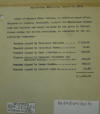
|
14 May 1927.
Letter from Benjamin C. Warnick, Neptune
Mine, to US Consul A. J. McConnico,
Bluefields, p. 2.
"Bluefields,
Nicaragua, August 23, 1927. ¶
Claim of Bonanza Mines Company, an
American corporation, Benjamin C.
Warnick, President, against the
Nicaraguan Government for supplies and
money demanded by and given to Liberal
forces during the recent revolution, as
evidenced by the accompanying vouchers:-
¶ Voucher signed by Francisco
Gonzales $154.88 ¶ Voucher
signed by Sebastian Perez 54.50 ¶
Voucher signed by Luis Arroliga 500.00
¶ Voucher signed by Fernando
Gutierrez and Humberto Molina 266.60
¶ Voucher signed by Ramon Gradis
500.00 ¶ Voucher signed by
Rodolfo Dorn B 48.60 ¶
[total] $1,524.58"
|
|
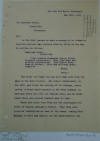
|
1.
28 May 1927.
Letter from A. B. Brand,
San Juan del
Norte, to US Consul A. J. McConnico,
Bluefields, p. 1.
"Sir: ¶
On the 25th instant we sent a message to
be forwarded from the Colorado Bar
wireless station, which we now beg to
confirm, as follows: ¶
“American Consul, ¶ Bluefields.
¶ “Five hundred disbanded troops
should be moved immediately. Here
five days committing depredations.
Authorities Greytown no control.
Food and military guard required.
¶ Brand. ¶ Paton.”
¶ The first lot (some 300 and odd)
came down from the Lake on the 21st
instant. The second installment,
on the 24th, and since the sending of
our message, above quoted, a fresh bunch
arrived on the 27th instant, so that now
there are over six hundred here, and we
understand that there are several more
to come. ¶ These men claim
that they are the discharged soldiers of
General Moncada's forces. That
they were promised transportation back
to the coast; coming from Managua to
Fort San Carlos, at the south-eastern
end . . . "
|
|
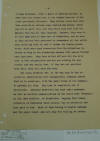
|
2.
28 May 1927.
Letter from A. B. Brand, San Juan del
Norte, to US Consul A. J. McConnico,
Bluefields, p. 2.
" . . . of Lake
Nicaragua, under a guard of American
marines, by whom they were turned over
to the “tender mercies” of the local
government officials. They further
claim that they have received no rations
since leaving San Carlos, which may not
be quite true; but that while they were
with the Marines they had all they
required. However, they seem to be
more than able to take care of
themselves, and as soon as they arrived
here proceeded to commandeer all the
cattle they could lay hold of, and to
ravage the nearby plantations, which
were just recovering from the attentions
bestowed on them by the plundering
savages that passed through here last
year. They have killed off most
all the milk cows in this neighborhood
and are now robbing the hen-roosts, and
say openly that, if they are not
provided with food, they will sack the
town. ¶ Our local Governor
who, by the way, says he has received no
instructions from headquarters, frankly
admits that he is powerless, with the
small force at his command, to prevent
all this. The town is completely
out of provisions. Governor
Gutierrez has sent radio messages, as
well as written communications by the
motor-boat “Venture” to the Jefe
Politico, at Bluefields, begging that
transportation be furnished these
people, but no attention has been paid
to him. Most of them belong to
Puerto Cabezas and the upper coast, and
are only too willing to return . . . "
|
|
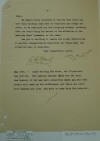
|
3.
28 May 1927.
Letter from A. B. Brand,
San Juan del
Norte, to US Consul A. J. McConnico,
Bluefields, p. 3.
" . . . there.
¶ We cannot bring ourselves to
believe that these men have been
willfully sent here to terrorize and
ravage the place, so we addressed you
the foregoing message, trusting that you
would bring the matter to the attention
of the American Naval Commander on the
coast. ¶ Can you do anything
to induce the proper authorities to
provide transportation facilities for
these men? The situation here is
desperate. ¶ Very
respectfully yours, ¶ /s/ A. B.
Brand ¶ May 30th. –
Since writing the above, the “Victorine”
has arrived. The captain demands
C$200 for the trip. One hundred of
the men have subscribed C$200 and the
town people will make up the difference;
but there are still five hundred men
left, and more to come from the
interior."
|
|
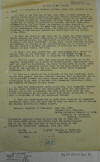
|
8 June 1927.
Declaration of W. J. Crampton, Acting
Collector General of Customs, Managua,
p. 1.
"TO WHOM IT MAY
CONCERN ¶ I, W. J. Crampton,
an American citizen, under oath, declare
as follows: ¶ 1. That on the
14th day of May, year 1926, a JUNTA
composed of Liberal revolutionists
headed by one Luis Beltran Sandoval,
known as the General in Chief of the
revolutionists, called at the Custom
House at El Bluff, Bluefields,
Nicaragua, of which Custom House the
undersigned was in charge as Collector
of Customs, the said JUNTA being
accompanied by one Leon Frank, an
American citizen engaged in business in
Bluefields. The said Leon Frank
did not enter the office of the
undersigned with the JUNTA, but remained
outside the door listening to the
argument between the undersigned and the
members of the JUNTA. ¶ 2.
That the object of the visit was to
compel the undersigned to handle Customs
and other collections in accordance with
the wishes of the revolutionists, the
undersigned on account of refusal to
comply being a few days thereafter, on
May 18th, ousted from his position as
Collector of Customs by the
revolutionists, all in violation of law
and contracts between the Republic of
Nicaragua and certain bankers of Wall
Street, New York. ¶ 3. That
a few days thereafter, the undersigned,
as a result of action taken by the
Secretary of State of the United States
of America, returned to his post as
Collector of Customs at El Bluff.
¶ 4. That in August, 1926, the
undersigned being advised of the
imminent bombardment of El Bluff by
revolutionists, transferred himself and
staff to Bluefields, six miles distant
from El Bluff, where he opened up a
temporary Custom House on the main
street in proximity to the barracks of
the U.S. Naval Forces under Commander
Richardson of the U.S.S. Galveston
¶ 5. That as a result of the
proximity of the two buildings, both on
the same street, and the official
business that necessarily had to be
transacted between the Naval forces and
the Custom House, the undersigned daily
came in contact with Commander
Richardson within and outside of regular
working hours. ¶ 6. That the
undersigned states positively that
Commander Richardson was never observed
by the undersigned under the influence
of liquor, and it was a notorious and
well known fact that the only liquor
refreshment he consumed, apart from
water, consisted of beer, most of which
was of very low alcoholic content.
¶ 7. That the undersigned has no
particular interest in Commander
Richardson apart from the fact that he
does not care to see an innocent man
falsely accused and remain silent.
¶ Managua, Republic of Nicaragua, June
8th, 1927. ¶ /s/ W.J.
Crampton, ¶ Acting Collector
General of Customs ¶
Republic of Nicaragua ¶
Managua, Nicaragua. ¶
Personally appeared before me this 8th
day of June 1927 the above named person
and stated that the above document was
of his own free will and to which he
swore to and affixed his signature.
Managua, June 8th, 1927. ¶
/s/ Charles C. Eberhardt, American
Minister"
|
|
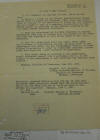
|
8 June 1927.
Declaration of W. J. Crampton, Acting
Collector General of Customs, Managua,
p. 2.
"TO WHOM IT MAY
CONCERN: ¶ I, W. J.
Crampton, an American citizen, declare
as follows: ¶ 1. That as a
result of the Liberal revolutionists
attacking El Bluff in August and
September, 1926, where the Custom House
is located, on the east coast of
Nicaragua, the undersigned was obliged
to open up a temporary Custom House in
Bluefields located in proximity to the
barracks occupied by the U.S. Naval
forces occupying Bluefields. ¶
2. That the undersigned as the then
Collector of Customs necessarily came
much in contact with the officers of the
landing force and especially so with
Lieut. McGee of the U.S.S. Galveston.
¶ 3. That the undersigned never
saw Lieut. McGee under the influence of
intoxicating liquors, it being known to
the undersigned that McGee, who was
Intelligence Officer, at times feigned
intoxication in order to obtain very
necessary information from negro and
other residents of Bluefields. ¶
4. That Lieut. McGee as observed by the
undersigned, always conducted himself
like a gentleman, and is, in the opinion
of the undersigned, a very efficient and
forceful Naval officer. ¶
Managua, Republic of Nicaragua, June
8th, 1927. ¶ /s/ W.J.
Crampton, ¶ Acting
collector-General of Customs, ¶
Republic of Nicaragua, ¶
Managua, Nicaragua. ¶
Personally appeared before me this 8th
day of June 1927 the above named person
and stated that the above document was
of his own free will and to which he
wore to and affixed his signature.
Managua, June 8, 1927. ¶ /s/
Charles C. Eberhardt, American Minister"
|
|
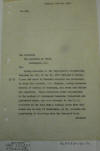
|
20 June 1927.
Letter from US Minister C. Eberhardt,
Managua, to Sec. State, Washington D.C.,
p. 1.
"Sir: ¶
Having reference to the Department’s
Confidential Despatch No. 227, of May
12, 1927 (317.115 B 621/20), I have the
honor to transmit herewith two
statements, by which the American, W. J.
Crampton, Acting Collector General of
Customs of Nicaragua, has sworn and
affirmed his signature. These
statements refer respectively to the
conduct of Lieutenant Commander
Richardson and Lieutenant McGee, who
were attached to the U.S.S. GALVESTON at
the time when a landing force from that
vessel was on duty at Bluefields, as Mr.
Crampton had opportunity of observing
from the frequent daily . . . "
|
|
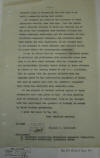
|
20 June 1927.
Letter from US Minister C. Eberhardt,
Managua, to Sec. State, Washington D.C.,
p. 2.
" . . . contacts
which he necessarily had with them in as
small a community during that period.
¶ Mr. Crampton had given me the
substance of these statements verbally
some time ago. When the
Department’s dispatch referred to above
was received and it was noted that
complaints from American citizens and
others seriously reflecting upon the
character of both Lieutenant Commander
Richardson and Lieutenant McGee were
before the Navy Department, it was
thought that in all fairness to those
officers such evidence should be placed
before the investigating committee.
¶ It may be stated that Mr.
Campton’s statement agrees in virtually
all particulars with statements which
were made to me from other sources; that
Mr. Crampton was not particularly
friendly toward either of these officers
or others of the landing forces of the
U.S.S. GALVESTON; that he agrees with
the general estimate from the Atlantic
coast of the questionable character of
Frank; and that he agrees also with the
Admiral’s statement that Frank has
committed many unneutral acts. ¶
At the request of Admiral Latimer copies
of these statements have been given to
him. He will probably soon be returning
to Washington, when he may re-open with
the Department the question of refusal
to extend to Frank further protection.
¶ In have the honor to be, Sir, ¶
Your obedient servant, ¶
CHARLES C. EBERHARDT. ¶
Enclosures: ¶ 1/ Statement
concerning Lieutenant Commander
Richardson. ¶ 2/ Statement
concerning Lieutenant McGee"
|
|
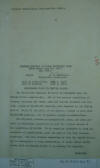
|
1.
8 July 1927.
"Concrete Results in Trade Extension
Work (Year ended June 30, 1927, No.
180)," US Consul A. J. McConnico,
Bluefields, p. 1.
"DEPENDENCE UPON
THE UNITED STATES. ¶ The
Bluefields Consular District is
dependent upon the United States
commercially. All of the exports
consisted of bananas, mahogany and
cedar, gold and silver, coconuts and
turtles, valued at $3,000,000 annually,
are absorbed by the United States.
Fully 85 percent of its imports, valued
at more than $2,000,000 annually, are of
American origin or manufacture. ¶
The district produces no manufactured
goods, nor food products in sufficient
quantities to meet the limited demand of
its population of 50,000. It is
compelled therefore to seek all
varieties of manufactured goods and most
of its food products elsewhere.
Its only steamer connection is with the
United States, and in consequence of
long association, it deals almost
exclusively with the United States in
purchasing its supplies. . . . "
|
|
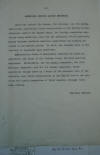
|
2.
8 July 1927.
"Concrete Results in Trade Extension
Work (Year ended June 30, 1927, No.
180)," US Consul A. J. McConnico,
Bluefields, p. 2.
" . . . AMERICANS
CONTROL LARGER INTERESTS. ¶
Americans control the banana, the
mahogany, and the mining industries,
maintaining their headquarters in the
United States. Americans control
the import trade, the leading commission
merchants being Americans, and even the
principal retail merchants, mainly
Chinese, maintain American connections
and banking accounts in the United
States. In fact, the economic life
of the district is dependent upon
Americans. ¶ Six American
firms of Bluefields represent 35
American exporters; and three of the
foreign firms, six more American
exporters. Furthermore, the two
mining companies, the five mahogany
companies, and the two banana companies,
whose operations really serve as a basis
of the economic life of the district,
have their headquarters in the United
States and purchase the larger
properties of their supplies through
their home offices. . . . "
|
|
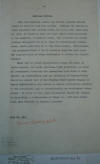
|
3.
8 July 1927.
"Concrete Results in Trade Extension
Work (Year ended June 30, 1927, No.
180)," US Consul A. J. McConnico,
Bluefields, p. 3.
" . . . CONSULAR
EFFORTS. ¶ With such
American control and rivalry consular
efforts cannot be credited with much
success. Although 100 replies to
trade inquiries were written during the
fiscal year ended June 30, 1927, it
cannot be said that this office aided
materially in the promotion of American
trade. The situation was rather
critical throughout the year, owing to
revolutionary disturbances, trade
conditions at no time being normal.
Nevertheless, the representatives of the
41 American exporters were alert and
took advantage of every opportunity to
satisfy the limited demands. ¶
There were no trade opportunities during
the year; no trade disputes, nor cases
involving trade protection, no cases of
governmental contracts and concessions
upon which to base reports; no
construction work nor extension of
transportation facilities except that of
the Bragman Bluff Lumber Company at
Puerto Cabezas (which was carried on
amidst difficulties incident to the
revolution); and no reconstruction and
development enterprises. In fact,
it was a year of business inactivity
verging on stagnation, a continuation of
which for a few more months would have
resulted in economic disaster. . . . "
|
|
|
|
|
PREVIOUS
NEXT
|
|
|
|
|
|
|
|

